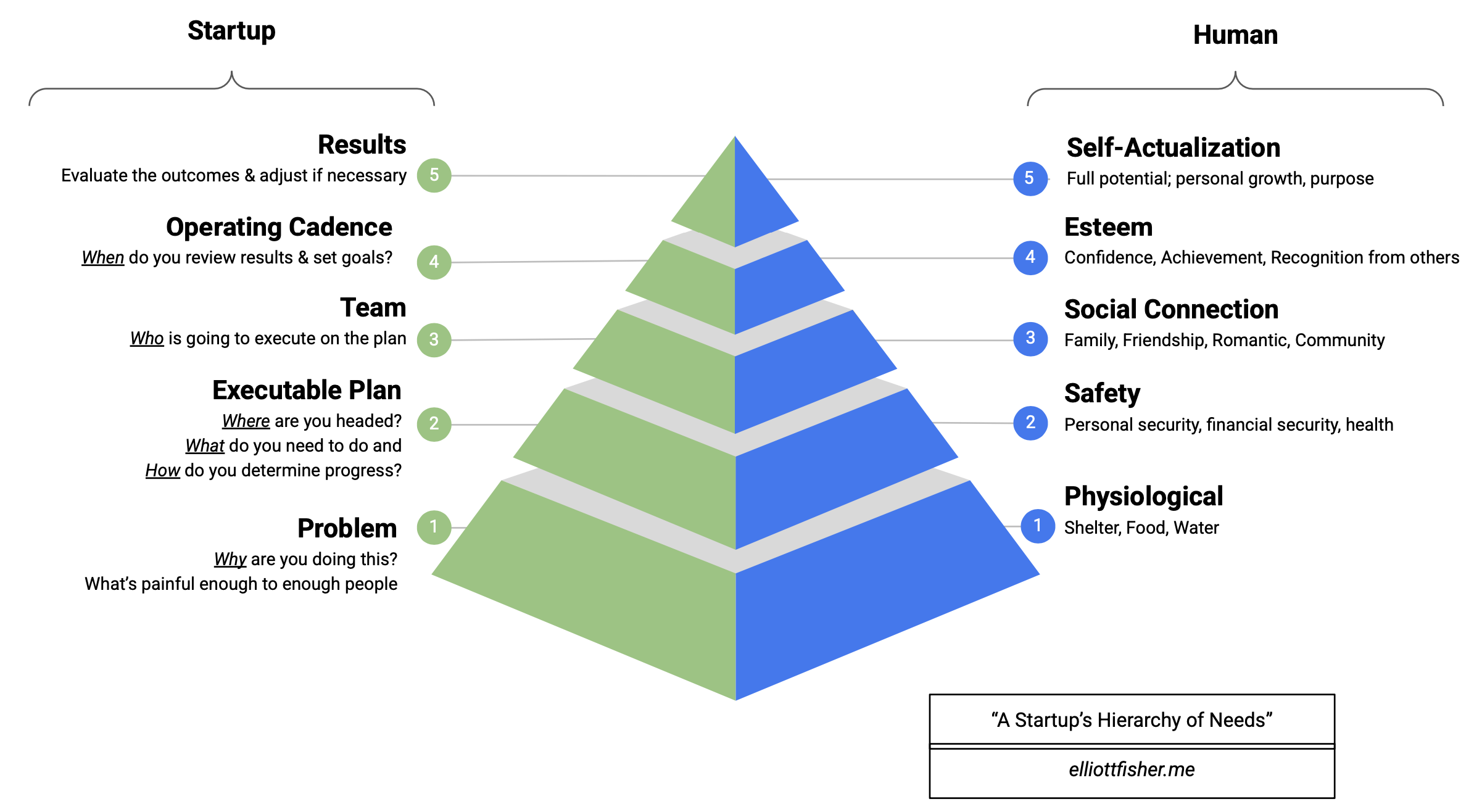A Startup’s Hierarchy of Needs
Startups, like humans, must meet their most basic needs before they can grow. Here's how to build from the ground up.
Abraham Maslow first introduced the popular idea behind humans’ hierarchy of needs in his 1943 paper “A Theory of Human Motivation.” In it, he explains how humans must meet basic needs before reaching their full potential. Startups are no different. Skip the fundamental needs, and your startup becomes Sisyphus—pushing a boulder of complexity with no progress.
Startups and Humans both have a hierarchy of needs that must be met in order to reach their full potential.
The hierarchy of [startup] needs:
A Problem
Every startup begins here. Solving a real, urgent problem is fundamental and core to any organization. The best way to understand that problem? Stay close to the customer.Executable Plan
Once you understand the problem, you need a plan—and data to guide it. What bets are you making? What signals will tell you if they’re working? What work needs to get done to work on building a solution to the problem?Team
Who is going to execute the plan? Roles must be clear. Ownership must be real. If everyone owns everything, no one owns anything.Operating Cadence
This is how work becomes momentum. Weekly syncs, monthly reviews, and quarterly planning keep feedback flowing and blockers visible.Results
Once the foundation is solid, results follow. Once a startup starts to see results now the real work begins: testing, refining, and pushing toward real solutions and value generation. However, without a strong foundation experimenting with results becomes very difficult and not scalable.
Startups aren’t that different from people. They struggle when their needs aren’t met—and thrive when they are.
